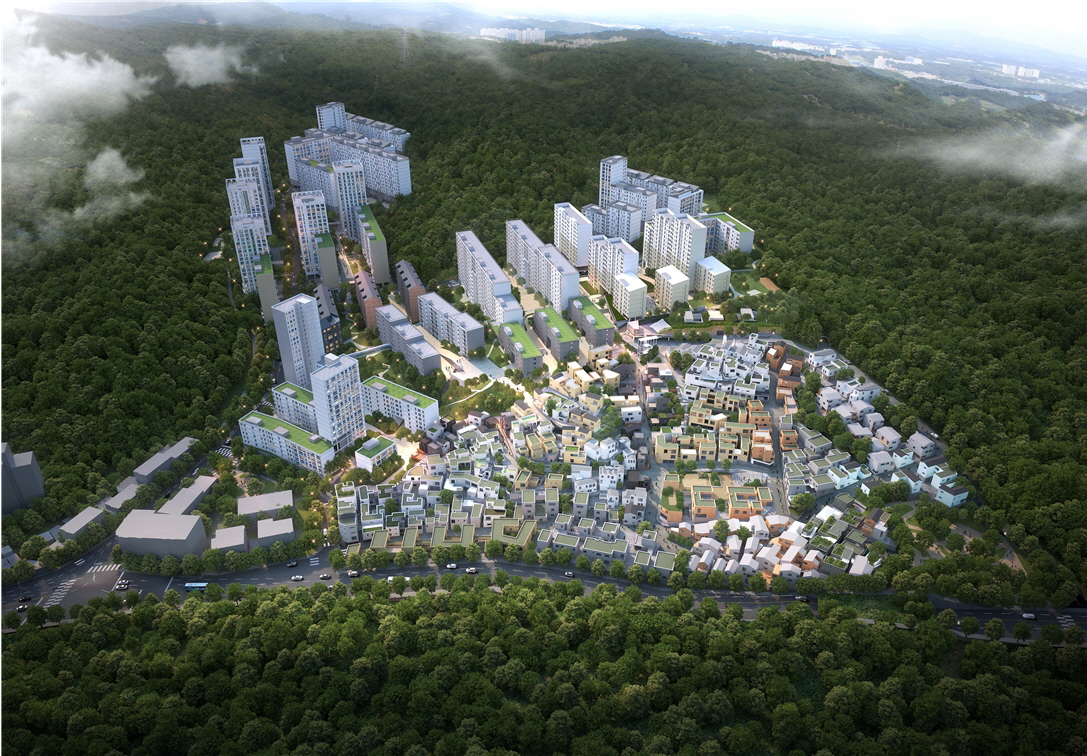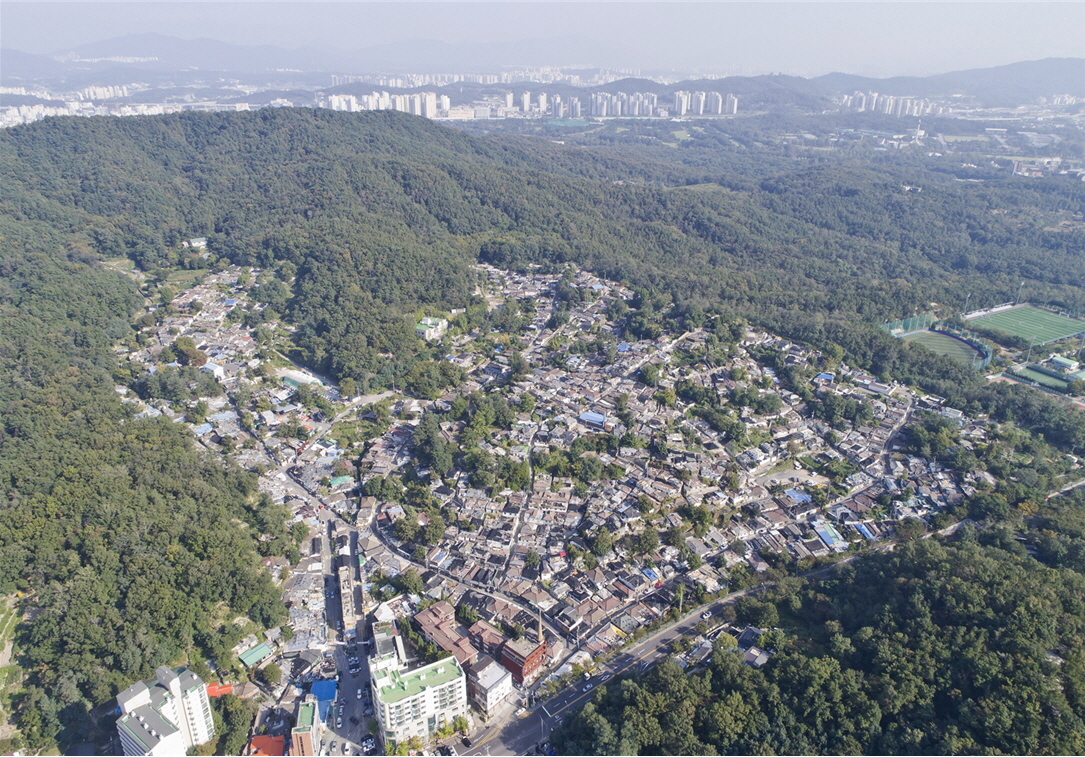SPACE July 2024 (No. 680)

Aerial view of Beksa Village Residential Preservation Project plan (2021) Images courtesy of Seoul Metropolitan Government

Aerial view of current Beksa Village (2021) Images courtesy of Seoul Metropolitan Government
Beksa Village (covered in SPACE Nos. 527, 533), located at 104 Junggye-dong, Nowon-gu, Seoul, is often called Seoul’s last underdeveloped neighbourhood. It was established in 1967 when the government forcibly relocated residents from informal settlements across Seoul during a redevelopment push. Residents had to build their own homes. To this day, Beksa Village retains traces of its past, with homes reduced in size to ensure sunlight for all and several houses sharing a single alley. The ‘Beksa Village Residential Preservation Project’ aims to preserve the unique topography, house sites, and alleyways of Beksa Village, while guaranteeing the housing rights of current residents. In 2009, Beksa Village was included in the ‘Junggyebon-dong Housing Redevelopment Maintenance Area’ (187,979m2). Experts unanimously agreed on the need to preserve the disappearing history of Seoul’s residential life. Consequently, in 2012, the Seoul Metropolitan Government (SMG) accepted these opinions and decided to preserve the front part of Beksa Village, where rental apartments were planned, designating it as a preservation area (42,773m2).
The redevelopment plan involved building 1,953 apartment units on 70% of the land (102,730m2) and a rental housing complex with 484 units on 30% of the land (40,832m2). Unusually, ten architects were assigned different sections of the rental housing complex, designing their areas while collaborating, much like the residents did in the 1960s and 1970s. This approach aimed to preserve the sense of community inherent in Beksa Village’s layout. The design for the sale apartments was selected in 2018 through International Invited Design Competition for Apartment Housing in Junggyebon-dong Housing Redevelopment & Maintenance Zone (Junggyebon-dong Housing Design Competition).
Despite various setbacks, including the change of the project executor from LH to SH, the project finally passed the review by the Urban and Architecture Commission (UAC) in May 2019. In March 2024, it received approval for the management and disposition plan for the redevelopment project. However, just a month after approval, an exclusive report by JoongAng Ilbo revealed that SMG plans to scrap the existing plan. Citing high construction costs of 15 million KRW per pyeong for the rental housing complex, they plan to merge the two redevelopment methods into one, resulting in a typical apartment complex with up to 35 storeys and 3,043 units. SMG seems to lack the will to preserve Beksa Village, which it designated as a Seoul Future Heritage in 2013.
SMG has yet to formalise the cancellation of the existing project, and the revised plan must still undergo UAC review. Cho Namho (principal, Soltozibin Architects), who won the Junggyebon-dong Housing Design Competition, stated, ‘When the winning design was reviewed by the UAC, they insisted on reducing the height, saying even 20 storeys was too high. It’s uncertain if they will accept a 35-storey design now.’ He also criticised SMG’s intention to scrap the Beksa Village Residential Preservation Project, questioning if they were unaware of the high construction costs from the start. ‘SMG is simply not taking proactive measures’, he added.
Preservation costs money, and housing policies take time to yield results. However, new administrations often do not actively pursue the projects of their predecessors, instead promoting new policies. Thus, the first alternative redevelopment case that considered non- apartment communal housing and aimed to build quality rental housing has been on the verge of being scrapped due to economic burdens.





